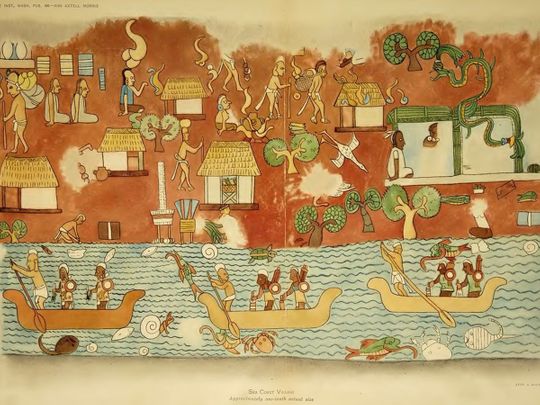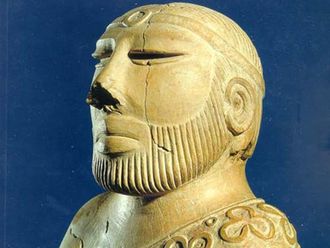
About 12,000 years ago, humans decided to stop their nomadic, hunter-forager lifestyle and hunker down.
Click start to play today’s Word Search, where you can spot a number of vibrant ancient civilisations.
When humans devoted themselves to agriculture instead, they ultimately set the stage for civilisations to grow and prosper. Small, agrarian societies became vibrant cities as time passed, with palaces, temples, art, philosophy and politics.
Here are three ancient societies that are still considered to be ingenious and innovative for their time:
1. Sumerian civilisation
In around 10,000BC, Mesopotamia’s Fertile Crescent, above the Tigris and Euphrates Rivers, became home to one of the first civilisations in human history. By about 4,500BC, the Sumerians were master farmers, able to cultivate crops in excess so that they could focus on building their grand cities – Eridu, Uruk and Ur. But the Sumerians are perhaps best known for being the first to create the written word. They came up with the writing system called cuneiform, which allowed them to track movement of grain throughout their territory, share tales, and spread advice on agriculture and cooking. The Sumerians also pioneered maths, astronomy, started the first schools, and invented irrigation.
2. Indus Valley civilisation
Around 7,000BC, small villages began cropping up throughout the Indus River Valley – modern-day India and Pakistan. By 3,300BC, these areas were full of the hustle bustle of an active community. The people of the Indus Valley may not have been the first to come up with cities, but they were the first to perfect them. Settlements like Harappa and Mohenjo-daro, for example, were home to about 50,000 individuals and featured baked brick buildings. The cities were kept clean thanks to a sophisticated water and sewage system, and creative planning went into making spacious streets with a grid-like structure.
3. Mayan civilisation
Mesoamericans began cultivating maize and beans in 7,000BC, which naturally led to permanent dwellings in southeaster Mexico, Guatemala and Belize. By 1,000BC, these abodes were replaced by ancient cities, with massive ceremonial and administrative complexes that climbed up to the skies. The Mayans were builders of large observatories, and were fascinated with the sky. They developed a sophisticated system of writing, and made meticulous recordings of planetary movements. They came up with a famous system of timekeeping, which many Mayan descendants still consult today.
From ancient Egyptians to Greeks and Romans, many other civilisations graced the Earth and left their own indelible mark. Which is your favourite? Play today’s Word Search and tell us at games@gulfnews.com.







